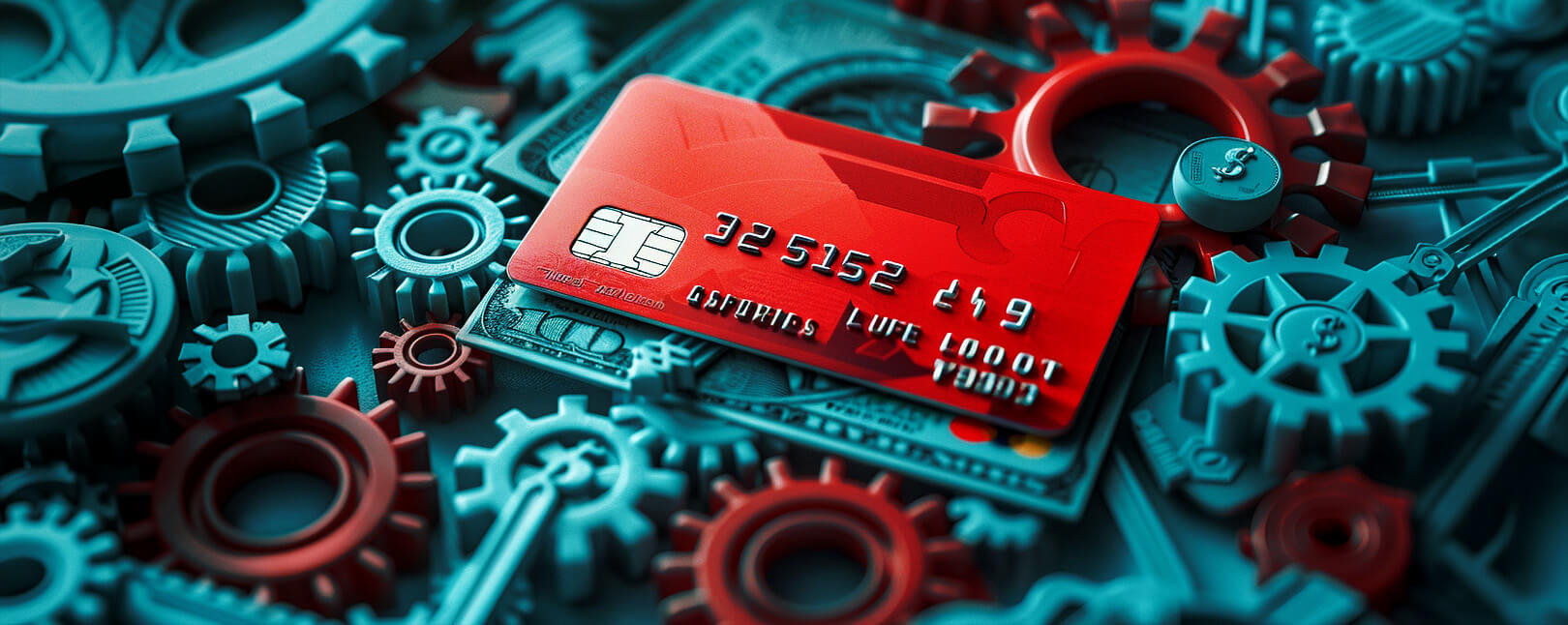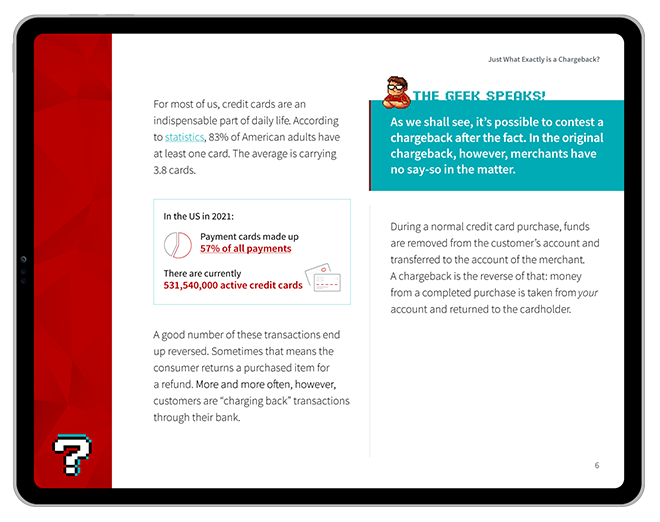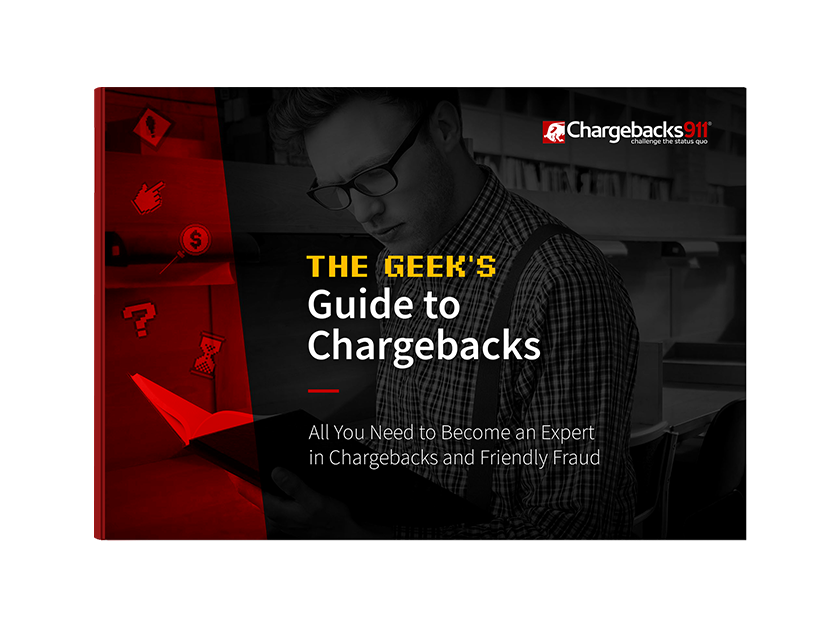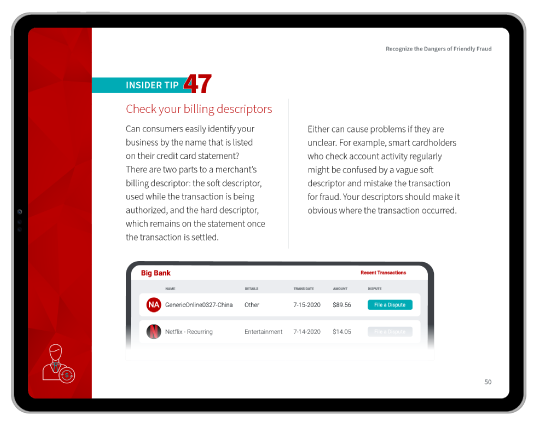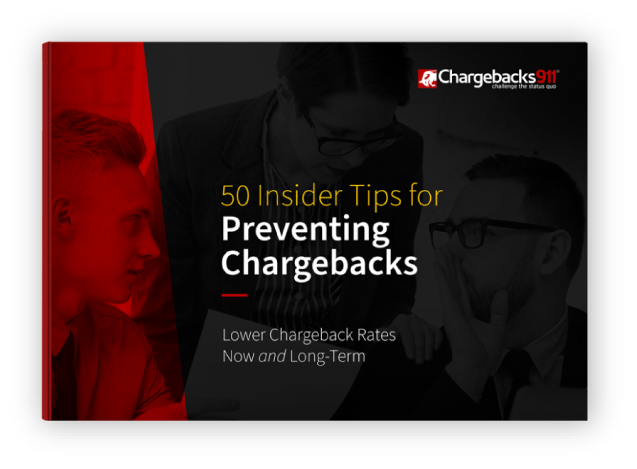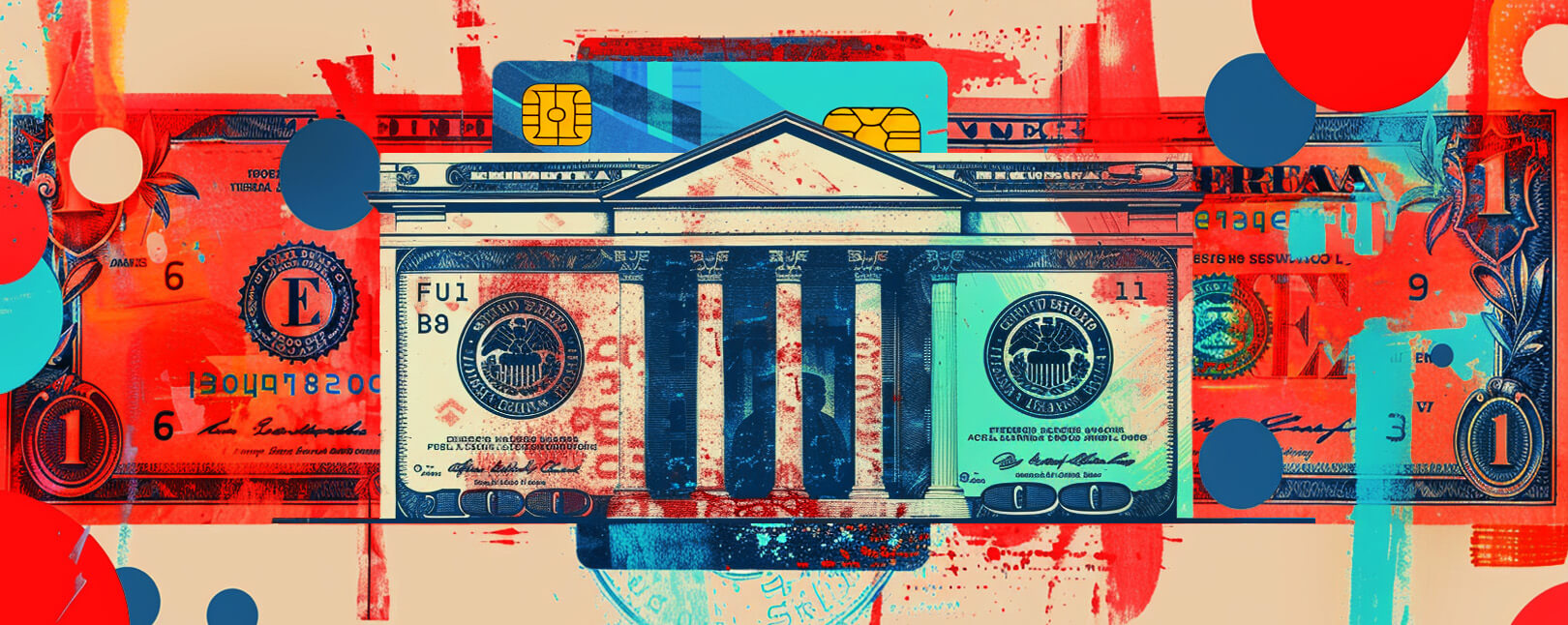What Cardholders & Merchants Need to Know About Credit Card Dispute Resolution
Here’s an interesting figure: nearly half of consumers in the US have disputed at least one charge on their credit card statement at some point.
It could be that the item didn’t work as we expected it to or that it wasn’t delivered as described. Maybe, the issue arose due to misleading merchant policies. Or, maybe it was a case of chargeback abuse (commonly known as friendly fraud).
Whatever the case, the fact is that millions of cardholders can initiate a dispute with a few taps in their banking app. This makes the process as painless and uncomplicated as possible… for them, at least. For merchants, there are unfortunate side effects of the credit card dispute resolution process, including fees, abuse, and wasted resources.
To clarify things on both ends, let’s examine the credit card dispute resolution process and how it works. We’ll also examine each step to see why chargeback resolution is so difficult, and provide some advice for both merchants and cardholders.
Recommended reading
What is a Credit Card Dispute?
A credit card dispute occurs when a cardholder questions a transaction on their credit card statement and formally requests the card issuer to investigate it. This might be the result of unauthorized charges, billing errors, or issues with the quality or delivery of goods and services purchased with a credit card.
The credit card dispute resolution, also known as the chargeback resolution process, involves multiple different parties. There are several key players involved from the initial customer complaint through arbitration, including:
- 1. The Cardholder: The owner of the card involved in a transaction
- 2. The Merchant: The party who sold the goods or services being disputed.
- 3. The Issuer: The bank who issued the card to the cardholder.
- 4. The Acquirer: The bank tasked with acquiring payment on the merchant’s behalf.
- 5. The Card Network: The card brand (Visa, Mastercard, etc.) that oversees the process.
When a dispute is filed, the issuer initiates an investigation, during which the transaction may be temporarily removed from the cardholder's account pending resolution. If the dispute is resolved in favor of the cardholder, the transaction will be permanently removed, and any associated charges will be credited back to their account.
Learn more about disputesWhen is a Credit Card Dispute a Valid Option?
A credit card dispute is a valid option for a cardholder under several circumstances, primarily focusing on unauthorized charges, billing errors, and dissatisfaction with goods or services.
Here's a quick breakdown of these situations:
In all these cases, cardholders are encouraged to first reach out to the merchant to resolve the issue directly. This is often the quickest path for credit card dispute resolution.
If this effort is unsuccessful, filing a dispute with the credit card issuer is the next step. Cardholders should gather all relevant information, including receipts, order confirmations, and correspondence with the merchant, to support their claim during the dispute process.
The Steps of the Credit Card Dispute Resolution Process
Now that we have a better understanding of the why, let’s go over the how.
Let’s assume a cardholder identifies an unauthorized charge, billing error, or issue with the quality or delivery of goods and services on their credit card statement. Once the cardholder determines that a dispute is warranted, there are several steps they need to take before and during a dispute:
Step #1 | Contact the Merchant
Before initiating a formal dispute with the credit card issuer, cardholders are usually encouraged to contact the merchant directly to resolve the issue. Many disputes can be resolved quickly without needing to involve the card issuer.
Step #2 | Gather Documentation
If the issue cannot be resolved directly with the merchant, the cardholder should gather all relevant documentation related to the dispute. This can include receipts, order confirmations, emails or communication with the merchant, and any other evidence that supports the cardholder's claim.
Step #3 | File the Dispute
The cardholder must formally file the dispute with their credit card issuer. This can typically be done online, over the phone, or by writing a letter. The cardholder may need to provide details of the disputed transaction and any supporting documentation. There is usually a timeframe within which disputes must be reported after the statement date (usually within 120 days).
From here, the dispute passes from the cardholder to the issuing bank (i.e. the bank that issued the credit card in question). The bank will respond to the dispute through the following steps:
Step #4 | Investigation by the Credit Card Issuer
Upon receiving the dispute, the credit card issuer initiates an investigation. The issuer will review any evidence provided by the cardholder. They will also try to request information from the merchant.Step #5 | Provisional Refund
In this step, the bank determines that the cardholder has a valid complaint. In response, the bank issues a provisional refund to the cardholder. This is like a temporary refund, that can be made final once the dispute is settled.
Step #6 | Chargeback Initiated
The bank will issue a chargeback, debiting the merchant’s acquiring bank for the full amount of the original transaction, along with any applicable fees. The issuer also provides a chargeback reason code, which is meant to explain the reason for the dispute.
Keep in mind if the merchant can provide evidence that the transaction was legitimate and executed correctly, the cardholder may lose the disputed funds. This is why it’s very important never to file a dispute except for those reasons outlined in the When is a Credit Card Dispute a Valid Option? section.
Next, the dispute passes to the merchant.
From the merchant's perspective, credit card dispute resolution involves a structured process aimed at defending the legitimacy of the transaction in question. Here's how this plays out for merchants:
Step #7 | Notification of Dispute
Merchant is notified by their processor that a dispute has been filed. This notification will include details of the disputed transaction, the reason for the dispute provided by the cardholder, and a deadline for response.
Step #8 | Reviewing the Dispute
The merchant carefully reviews the details of the claim, including the transaction date, amount, and the reason for the dispute. It’s important to understand the specific reason code associated with the dispute, as this will inform the response.
Step #9 | Gathering Evidence
The merchant must gather relevant evidence to prove the legitimacy of the transaction. This can include any documentation that proves the customer authorized the transaction and received what they paid for, like proof of delivery, a copy of the sales receipt or invoice, etc.
Step #10 | Submitting a Response
The merchant submits a formal response to the dispute. This response should include a detailed explanation of why the dispute is unfounded, along with all supporting evidence compiled in the last step.
Step #11 | Resolution
The card issuer will make a final decision on the dispute. If the decision favors the merchant, the funds will be released, and the dispute will be closed. If the decision favors the cardholder, the provisional credit will become permanent.
Throughout this process, efficient handling of disputes not only impacts your financial outcome but can also influence your relationship with payment processors and standing and overall chargeback ratio.
Merchants should analyze any patterns or weaknesses in their transaction processes that could reduce future disputes. This might involve enhancing customer service, revising return policies, or improving product descriptions and fulfillment practices.
Problems With The Credit Card Dispute Resolution Process
Anything with a ton of moving parts is going to eventually run into trouble. The credit card dispute process is no exception.
For merchants, a dispute requires input at every stage of the process. It imposes strict timelines and resolution progression that is anything but linear. To make matters worse, each provider is going to have their own set of rules regarding disputes. These factors can further complicate a system that is already inherently flawed in several ways. It’s:
- Subjective: The outcome of each credit card dispute is determined by humans that issue judgments as they see fit.
- Outdated: The Fair Credit Billing Act (FCBA) was adopted in the pre-internet era. The system is no longer suited to an increasingly digital global marketplace.
- Fallible: Banks operate under the assumption that the customer is always right. This makes the dispute resolution process decidedly one-sided.
- Vulnerable: The ease of credit card dispute resolution for cardholders can lead to elevated levels of friendly fraud and other dishonest practices.
- Damaging: Merchants either go under or increase prices to mitigate losses, and cardholders end up paying more while having fewer choices.
It’s true that this process has problems. At the moment, though, it’s the only system available to resolve credit card disputes.
All is not lost, however. Revealing the many flaws built into the dispute process can vastly improve one’s ability to overcome them. Understanding how best to navigate the dispute process can save merchants both time and money and better prepare their businesses for success. Knowledge, as they say, is power.
Credit Card Dispute Resolution: Best Practices for Cardholders
For cardholders, navigating the credit card dispute resolution process is mostly about paying attention to details and making sure to follow card issuers to the letter.
Following these practices does more than help achieve a favorable outcome. It also maintains a good relationship with both the merchant and the credit card issuer. It’s about being proactive, informed, and organized throughout the credit card dispute resolution process.
Credit Card Dispute Resolution Best Practices for Merchants
For merchants, managing payments to optimize credit card dispute resolution is crucial. This is how you maintain a healthy business and minimize financial losses. To that end, here are five best practices that can help merchants navigate the credit card dispute resolution process:
As a last point, remember to engage in representment when you feel it’s appropriate. This aspect of credit card dispute resolution plays a central role in a merchant's arsenal against chargebacks. It offers a pathway to contest a chargeback by providing compelling evidence that a transaction was legitimate and all merchant obligations were met.
This process requires meticulous documentation and a deep understanding of chargeback reason codes and regulations, though. This emphasizes the need for expertise in navigating complex procedures to recover funds and maintain a positive transaction record.
Take a Multilayered Approach
Unfortunately, even the best-equipped merchants will still face disputes and chargebacks from time to time (legitimate or otherwise). This is why a multi-layered approach to chargebacks is needed.
A comprehensive strategy should include both preventative measures to minimize the occurrence of chargebacks and mechanisms for dealing with disputes in real-time. You need someone on your side who understands how to tackle chargebacks at their source, though.
Chargebacks911® can help you in the reactive aspects of credit card dispute resolution. We can also offer proactive support by identifying and addressing vulnerabilities in payment processing systems.
Through detailed analytics, strategic advice, and handling the intricacies of credit card dispute resolution, Chargebacks911 equips merchants with the tools to significantly reduce the impact of chargebacks, ensuring they are well-prepared to fight back against illegitimate disputes with a well-rounded, effective strategy.
FAQs
What is the best way to resolve a credit card dispute?
The best way to resolve a credit card dispute is to address the issue directly with the merchant, and to seek a resolution before escalating the dispute to the credit card issuer and by providing all relevant documentation to support your case if the dispute needs to be formally filed. This approach facilitates a quicker resolution and minimizes complications.
Are credit card disputes usually successful?
The success of credit card disputes can vary widely and depends on the specifics of each case, including the quality of the evidence provided and the reason for the dispute. Generally, cardholders may find success if they have clear evidence of fraud or merchant error, while merchants can prevail by providing solid documentation of the transaction and fulfillment of service or delivery of goods.
What qualifies for a credit card dispute?
Qualifications for a credit card dispute include unauthorized charges, billing errors, fraudulent transactions, and dissatisfaction with goods or services that were not delivered as described or agreed upon. Disputes must be reported within a specified timeframe, usually within 120 days of the statement date showing the disputed transaction.
What happens when you dispute a credit card payment?
When you dispute a credit card payment, the card issuer temporarily removes the charge from your account and investigates the claim by reviewing evidence from both the cardholder and the merchant. If the dispute is resolved in the cardholder's favor, the charge is permanently removed; if not, the charge is reinstated to the account.
Who pays when you dispute a charge?
When a credit card charge is disputed and resolved in favor of the cardholder, the merchant typically bears the cost and must refund the transaction amount. If the dispute is resolved in favor of the merchant, the cardholder remains responsible for the charge.
